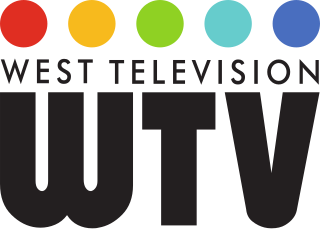
Television broadcasting in Australia began officially on 16 September 1956, with the opening of TCN-9, quickly followed by national and commercial stations in Sydney and Melbourne, all these being in 625-line black and white. The commencement date was designed so as to provide coverage of the Olympic Games in Melbourne. It has now grown to be a nationwide system that includes a broad range of public, commercial, community, subscription, narrowcast, and amateur stations.

Television in Australia began experimentally as early as 1929 in Melbourne with radio stations 3DB and 3UZ, and 2UE in Sydney, using the Radiovision system by Gilbert Miles and Donald McDonald, and later from other locations, such as Brisbane in 1934.

Southern Cross Media Group Limited, doing business as Southern Cross Austereo, is an Australian media company which operates broadcast radio and television stations. It is the largest radio broadcaster in Australia, operating 86 radio stations, and has a reach into every state and territory.
Community television in Australia is a form of free-to-air non-commercial citizen media in which a television station is owned, operated and/or programmed by a community group to provide local programming to its broadcast area. In principle, community television is another model of facilitating media production and involvement by private citizens and can be likened to public-access television in the United States and community television in Canada.

C31 Melbourne is a free-to-air community television channel in Melbourne, Victoria, Australia. Its name is derived from UHF 31, the frequency and channel number reserved for analogue broadcasts by metropolitan community television stations in Australia.
Access 31 was a free-to-air community television station based in Perth, Western Australia which operated between 1999 and 2008 before closing due to insolvency. The station had broadcast on UHF 31 from NEW's television mast at Carmel in the Perth Hills. It was also available at certain times on the Westlink Network, which at the time was broadcast via the Optus Aurora satellite service and some analogue terrestrial repeaters which included the city of Albany.

ABC Television in Western Australia comprises national and local programming on the ABC television network in the Australian state of Western Australia, on a number of channels under the ABC call sign. There is some local programming from the Perth studio.

Television Sydney (TVS) was a free-to-air sponsors-based community television station broadcasting in Sydney, Australia. The station lost both its community franchise and the battle to remain on the air on 8 December 2015 and ceased transmission on 20 December 2015 after almost ten years on the air. The station was not replaced.
Digital terrestrial television in Australia commenced on 1 January 2001 in Sydney, Melbourne, Brisbane, Adelaide and Perth using DVB-T standards. The phase out of analogue PAL transmissions began on 30 June 2010 and was completed by 10 December 2013.
MTN is a television station licensed to serve Griffith and the surrounding Murrumbidgee Irrigation Area (M.I.A.). The station is owned and operated by WIN Corporation as a Seven Network affiliate.

ABC Television in New South Wales comprises national and local programming on the ABC television network in the Australian state of New South Wales, headquartered in Sydney.

ABC Television in South Australia comprises national and local programming on the ABC television network in the Australian state of South Australia, headquartered in Adelaide.

This timeline of Australian television lists important station launches, programs, major television events, and technological advancements that have significantly changed the forms of broadcasting available to viewers of television in Australia. The history of television in Australia can be traced back to an announcement from the Menzies' government concerning plans for television services in Sydney and Melbourne.
Hitchhike TV was a community television station based in Brisbane, Australia. Originally known as Briz 31, the station existed in various forms from 1992 until its closure in 2019.
ACE TV was a free-to-air community television channel in Adelaide, South Australia which broadcast from May 1994 to December 2002. ACE TV was cancelled in 2002 due to breaching of licence conditions. The last ACE TV broadcast on-screen was in May 2002. ACE TV was superseded by C31 Adelaide, which was launched on 23 April 2004.

West TV was a free-to-air community television station that began broadcasting in standard-definition digital format on logical channel 44 in Perth, Western Australia at 10 am on 10 April 2010.
Eastern Newsbeat is a local community television program in Melbourne, Australia on Channel 31 Melbourne.
CTV 41 Bendigo was a free-to-air community television station based in Bendigo. The station was awarded a trial licence in July 1996 for broadcasting on UHF 41. On 2 April 1998, the Australian Broadcasting Authority, regulator of television and radio broadcasting in Australia, decided to not renew the trial licences of community broadcasters that were not yet on-air, but the intervention of the Community Broadcasting Association of Australia prompted the extension of such licences from 1 July 1998 to 30 June 1999.

Off the Couch with Ethan is an Australian travel television program, produced and presented by student Ethan White. The program is aimed at teenagers and their families, and presents Australian landmarks, towns and points of interest. It airs on C31 Melbourne & Geelong and Channel 44 Adelaide. Episodes are directed at high-school-aged students and their families.
LaNCE TV is a one-hour-long live variety show produced by LanceTV Inc., and is hosted by Lance DeBoyle and Gabriella Labucci. The show commenced streaming to Facebook in July 2017, from the regional city of Ballarat in Western Victoria. In February 2020 LaNCE TV also began airing on community television station C31 Melbourne.








